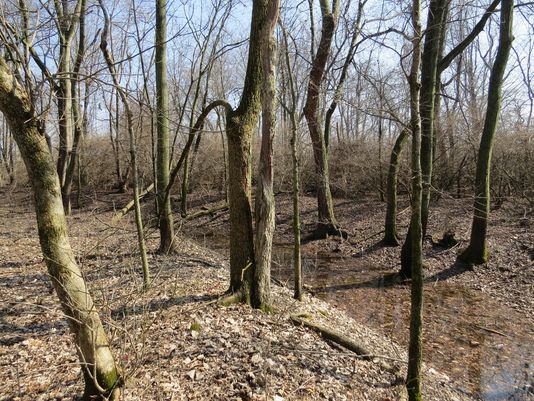Local real estate developer in Indiana Larry New has agreed to sell land encompassing the Yorktown Enclosure, a 2000 year old prehistoric earthwork, to a national preservation organization in order to create a permanent archaeological preserve. The Archaeological Conservancy, a national nonprofit organization headquartered in New Mexico, will acquire the land as a bargain-sale-to-charity, paying only $20,000 for property appraised at more than $100,000.
“We’re very pleased to be able to acquire this rare and significant site at such favorable terms”, said Paul Gardner, Midwest Regional Director for The Archaeological Conservancy. “Usually prime commercial real estate is priced beyond what we can realistically afford. When the importance of the site was explained to Mr. New, he was very agreeable to our acquiring it for an archaeological preserve and accepted our first offer of a purchase price”.
The Archaeological Conservancy, founded in 1980, it has acquired over 475 sites in 44 states including five in Indiana.
The Yorktown Enclosure is assigned by archaeologists to the New Castle Phase, a period of time between 250 BC and AD 350 when in east central Indiana, American Indians constructed relatively small circular earthworks and sometimes sizeable burial mounds. It is related to the more elaborate Ohio Hopewell Culture, whose earthworks of the same time period sometimes enclose over one hundred acres with earthen walls miles long. The Yorktown Enclosure seems have been recognized as a significant place as early as 1881 when a history of Delaware County mentioned that near Yorktown there was “one of those enclosures … of the class know as fortifications”. Since enclosures were typically built by digging a circular ditch and pitching the earth to the outside to create an encircling wall, they do superficially resemble a defensive structure. Today most archaeologists consider them to be ceremonial sites where the ditch and wall separate the interior, sacred space where important activities would take place from the outside mundane world of everyday life.
When visited by archaeologists in 2007, it was apparent that the Yorktown Enclosure had been modified during the historic period. The ditch has been deepened and a low interior wall created, while the original exterior wall has been buried by fill removed from the ditch. In addition the causeway, which would allow access to the interior of the circle across the ditch, has been removed. Fortunately, the interior of the circle and the original wall are still intact, so the site maintains significant research potential and is thought to be eligible for nomination to The National Register of Historic Places.
The chain of events that led to the preservation of this special place began in late February 2015 when New inquired about obtaining permits to allow further development of his property along Route 32 west of Yorktown. Word of the planned development reached Ball State University, whose archaeologists had done research at the Yorktown Enclosure in 2007. Dr. Kevin Nolan, Senior Archaeologist with the BSU archaeological laboratories, contacted Paul Gardner and informed him of a potential threat to the earthwork and provided contact information for the landowner. After Gardner visited the archaeological site to ascertain its suitability for preservation, he and New quickly reached an agreement to preserve the archaeological site, while allowing New’s property without cultural resources to be developed without archaeological entanglements.
“When we are able to preserve an important part of the nation’s heritage while seeing economic development proceed as well, it really feels like a win-win”, Gardner concluded.




